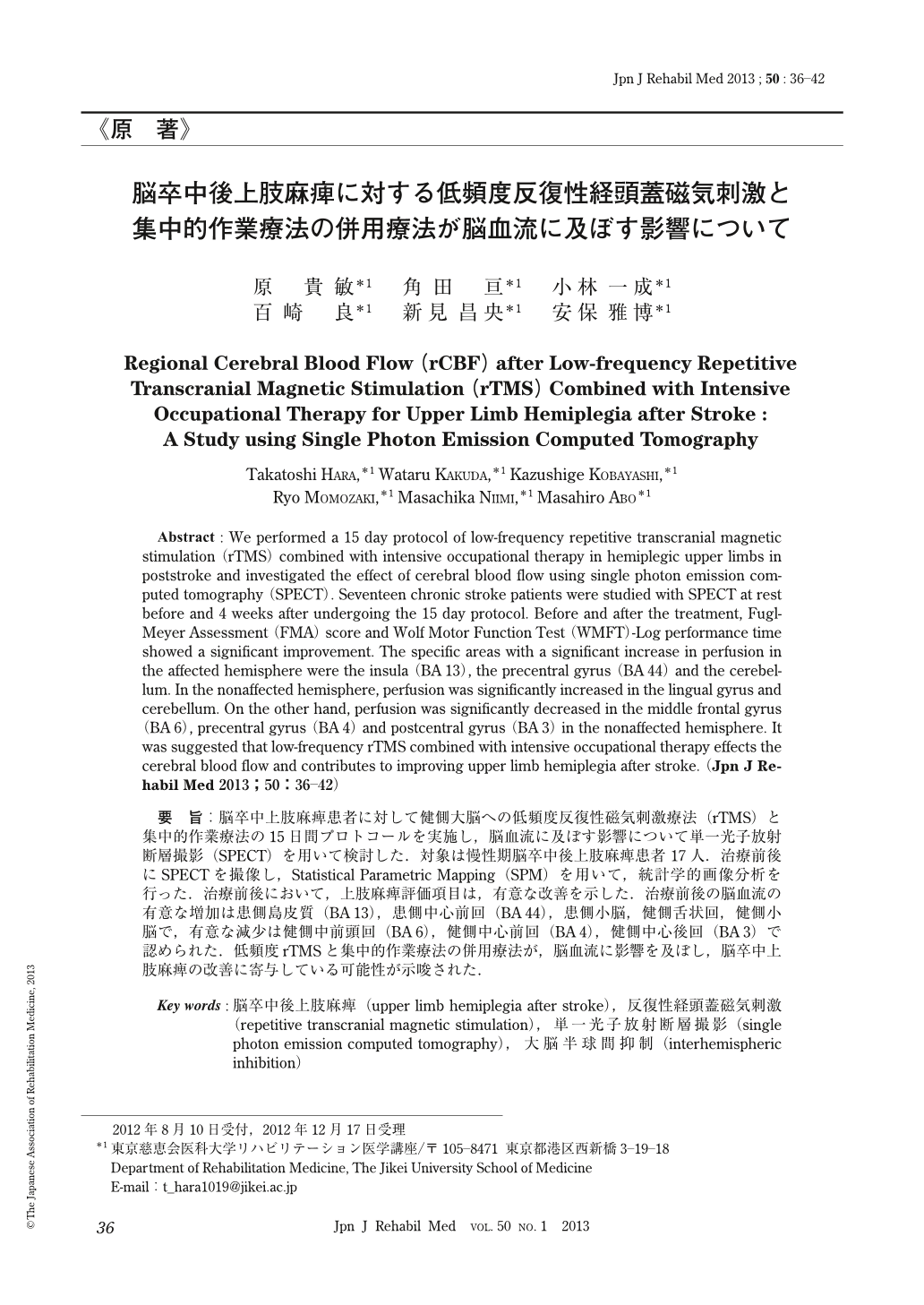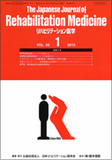Japanese
English
- 販売していません
- Abstract 文献概要
- 1ページ目 Look Inside
- 参考文献 Reference
要旨:脳卒中上肢麻痺患者に対して健側大脳への低頻度反復性磁気刺激療法(rTMS)と集中的作業療法の15日間プロトコールを実施し,脳血流に及ぼす影響について単一光子放射断層撮影(SPECT)を用いて検討した.対象は慢性期脳卒中後上肢麻痺患者17人.治療前後にSPECTを撮像し,Statistical Parametric Mapping(SPM)を用いて,統計学的画像分析を行った.治療前後において,上肢麻痺評価項目は,有意な改善を示した.治療前後の脳血流の有意な増加は患側島皮質(BA13),患側中心前回(BA44),患側小脳,健側舌状回,健側小脳で,有意な減少は健側中前頭回(BA6),健側中心前回(BA4),健側中心後回(BA3)で認められた.低頻度rTMSと集中的作業療法の併用療法が,脳血流に影響を及ぼし,脳卒中上肢麻痺の改善に寄与している可能性が示唆された.
Abstract : We performed a 15 day protocol of low-frequency repetitive transcranial magnetic stimulation (rTMS) combined with intensive occupational therapy in hemiplegic upper limbs in poststroke and investigated the effect of cerebral blood flow using single photon emission computed tomography (SPECT). Seventeen chronic stroke patients were studied with SPECT at rest before and 4 weeks after undergoing the 15 day protocol. Before and after the treatment, Fugl-Meyer Assessment (FMA) score and Wolf Motor Function Test (WMFT)-Log performance time showed a significant improvement. The specific areas with a significant increase in perfusion in the affected hemisphere were the insula (BA13), the precentral gyrus (BA44) and the cerebellum. In the nonaffected hemisphere, perfusion was significantly increased in the lingual gyrus and cerebellum. On the other hand, perfusion was significantly decreased in the middle frontal gyrus (BA6), precentral gyrus (BA4) and postcentral gyrus (BA3) in the nonaffected hemisphere. It was suggested that low-frequency rTMS combined with intensive occupational therapy effects the cerebral blood flow and contributes to improving upper limb hemiplegia after stroke.

Copyright © 2013, The Japanese Association of Rehabilitation Medicine. All rights reserved.


